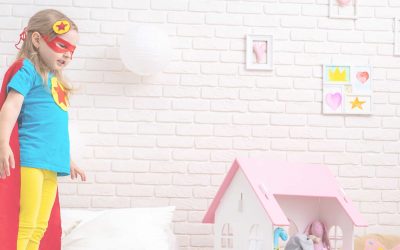Here’s A Two (2) Step Strategy For Conflict Resolution
Why does it seem that kids always lean towards hitting, crying, or tattling instead of solving the problems they have independently?
Hitting, crying and tattling are very age appropriate reactions when problems arise. If your child is expressing themselves with these types of behaviours, you’re not alone!
These reactions, unfortunately, don’t solve the problems for the long term and they don’t teach your child how to solve problems independently, in a productive manner. All kids need conflict resolution skills and these skills must be taught and practiced.
Once your child understands the “2 Step Strategy”, they will need lots of practice to help them become more confident in using the strategy on their own. For those children with siblings, they naturally get lots of opportunities to practice.
For children without siblings or siblings with a large age gap, they will have less opportunity, and therefore school and play-dates become their time to work on these skills.
This 2 Step Strategy For Conflict Resolution will be beneficial for you and your child. It will be a simple, easy and effective way for your child to distinguish between “BIG” and “SMALL” problems and help them analyze the issue and learn to use appropriate solutions.
2 STEP STRATEGY FOR CONFLICT RESOLUTION
Step 1: Ask yourself: “Is this a big or small problem?”
Step 2: What is the best solution?
Now, let’s take a look at how to help your child become experts with this strategy.
Work with your child on helping them understand what is considered a “BIG” problem and a “SMALL” problem.
Examples of Small Problems: someone taking your pencil, taking a toy, or moving spots in line.
Small Problem Solutions: learn to walk away and know that you can’t control others, but you can only control yourself. Give yourself power by walking away and not letting the small problem bother you.
Examples of Big Problems: bullying or consistent teasing, physical hitting or touching, you’ve asked them to stop, and they continue.
Big problem Solutions: Ask in a kind way for them to stop. If they don’t listen, kindly let them know that if they don’t stop you will have to get the teacher for help. Teach your kids that adults are there for support if you are not able to solve the problem alone.
Learning first to try and solve the problem alone, but knowing for BIG problems there are adults for support, is a great strategy and an excellent way for children to learn to solve his/her own problems first.
Reading books with your kids around this issue is another extremely useful tool. Books help your child relate to others, and they realize they are not alone.
PROBLEM-SOLVING BOOKLIST:
1) The Recess Queen by Alexis O’Neill
2) Enemy Pie by Derek Munson
3) The Invisible Boy by Trudy Ludwig
4) Wonder by R.J Palacio
5) You, Me and Empathy by Jayneen Sanders
Breaking things down to a simple, easy to follow strategy will encourage success in your kids! Work with them to become problem-solving experts by talking to them about different problems, reading books, role-playing and most importantly, being their role model!










